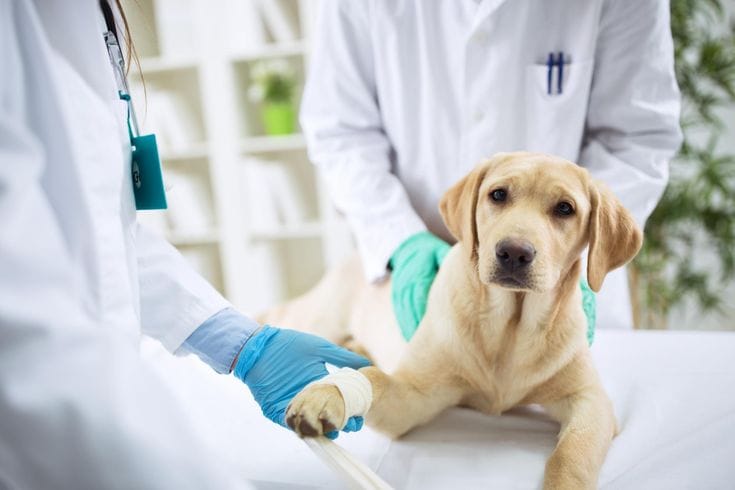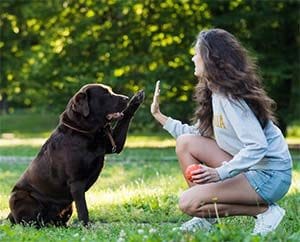Owning a pet is one of the most fulfilling experiences you can have. Whether you have a playful puppy, a lazy cat, or a chirping bird, pets bring joy and companionship to our lives. But with that joy comes responsibility. Taking care of your pets at home involves more than just feeding and cuddling them—it’s about meeting their physical, emotional, and medical needs. This guide covers everything you need to know about keeping your pets healthy, happy, and thriving in a home environment.

1. Provide a Balanced Diet
Understand Your Pet’s Nutritional Needs
Different pets have different dietary requirements. Cats are obligate carnivores, needing a diet rich in protein, while dogs thrive on a mix of protein, fats, and carbohydrates. Birds require a variety of seeds, fruits, and vegetables.
Choose High-Quality Food
Always invest in high-quality pet food tailored to your pet’s specific needs. Avoid cheap, generic brands that may lack essential nutrients.
Avoid Harmful Foods
Some human foods are toxic to pets. For example, chocolate, grapes, and onions can harm dogs, while avocado and caffeine are dangerous for birds.
2. Ensure Fresh Water Availability
Always keep fresh, clean water accessible to your pets. Hydration is as essential for pets as it is for humans. For cats and dogs, replace water daily. For fish and other aquatic pets, clean their tanks and refresh the water regularly.
3. Regular Exercise and Playtime

Dogs
Dogs need daily walks and playtime to stay physically and mentally healthy. Activities like fetch, tug-of-war, or agility training keep them active and engaged.
Cats
Cats love climbing, scratching, and chasing toys. Interactive play with laser pointers or feather wands helps them burn off energy and stay entertained.
Small Pets
Rabbits, hamsters, and guinea pigs benefit from time outside their enclosures for exercise. Create a safe, enclosed space where they can explore.
4. Create a Comfortable Living Environment
Designated Spaces
Provide a cozy space for your pet to relax. Dogs might enjoy a soft bed, while cats often prefer enclosed areas like boxes or cat trees.
Temperature Control
Ensure your home is comfortable for your pet. Keep them warm during winter and provide cool spaces during hot weather.
Cleanliness
Regularly clean pet bedding, litter boxes, and cages to maintain hygiene and prevent odors.
[ruby_related heading=”More Read” total=4 layout=3]
5. Grooming Essentials
Brushing
Regular brushing prevents matting and removes loose fur. Long-haired pets require more frequent grooming than short-haired ones.
Bathing
Only bathe pets when necessary, using pet-friendly shampoos. Over-bathing can strip their coat of natural oils, leading to dryness or irritation. For dogs, aim for a bath every 4-6 weeks unless they get dirty. Cats generally groom themselves but might need occasional cleaning.
Nail Trimming
Overgrown nails can cause discomfort or injuries to your pets. Use pet-specific nail clippers, and if you’re unsure, seek professional help to avoid cutting into the quick.
Dental Care
Dental hygiene is often overlooked but is crucial for your pet’s health. Brush your pet’s teeth regularly with pet-safe toothpaste, and consider dental chews for dogs and cats.
6. Routine Health Checks
Vet Visits
Schedule regular vet visits for vaccinations, health screenings, and check-ups. Early detection of any health issues can make a significant difference.
Monitor Behavior
Watch for any changes in your pet’s behavior, such as reduced appetite, lethargy, or unusual habits. These could indicate underlying health problems.
Parasite Prevention
Protect your pets from fleas, ticks, and worms by using preventive medications. Consult your vet for the best options based on your pet’s size, breed, and lifestyle.
7. Mental Stimulation and Training
Interactive Toys
Engage your pets with toys that challenge their minds, like puzzle feeders for dogs and cats.
Basic Training
Teach your pets basic commands like sit, stay, and come. Training not only makes life easier but also strengthens your bond.
Socialization
Expose your pets to different environments, people, and animals to reduce fear and anxiety. Start early for the best results, especially for dogs.
8. Clean and Safe Environments

Pet-Proof Your Home
Remove hazards like poisonous plants, electrical cords, and small objects that pets could swallow.
Maintain Hygiene
Clean up after your pets, including regular vacuuming to control fur and dander. For birds and small animals, clean cages weekly to prevent bacteria buildup.
Safe Outdoor Access
If you allow outdoor access, ensure your yard is fenced and free from potential dangers like toxic plants or sharp objects.
9. Emotional Care and Bonding
Spend Quality Time
Pets thrive on companionship. Spend time cuddling, playing, or simply being around your pet to strengthen your bond.
Understand Their Needs
Each pet has unique emotional needs. Cats often value independence, while dogs are more social and need attention.
Provide Comfort During Stress
Loud noises like fireworks can scare pets. Create a safe, quiet space for them to retreat to when they’re anxious.
10. Pet-Specific Tips
For Dogs
- Establish a routine for feeding, walks, and playtime.
- Use a leash during walks to ensure safety.
For Cats
- Provide scratching posts to satisfy their natural instincts.
- Offer windowsill perches for indoor cats to enjoy the outside view.
For Birds
- Clean their cages and provide fresh water daily.
- Rotate toys to keep them entertained.
For Fish
- Test water quality regularly and maintain the correct pH levels.
- Avoid overfeeding, as it can harm their health and the tank’s cleanliness.
For Small Mammals
- Provide chew toys to maintain dental health.
- Line their cages with appropriate bedding for comfort.
11. Dealing with Shedding and Allergies
Regular Brushing
Brushing your pets reduces shedding and keeps fur off furniture.
Air Purifiers
Invest in an air purifier to minimize pet dander and allergens in the home.
Allergy Management
If you or a family member has allergies, consult your doctor and consider hypoallergenic pet breeds.
12. Traveling with Pets
Secure Transport
Use pet carriers or harnesses during car rides to keep them safe.
Pack Essentials
Bring food, water, toys, and any medications your pet might need.
Comfort During Travel
Ensure they are comfortable and not overly stressed during the journey. Take breaks for walks and bathroom needs for dogs.
13. Emergency Preparedness
First Aid Kit
Have a pet-specific first aid kit at home, including bandages, antiseptic wipes, and a thermometer.
Emergency Contacts
Keep your vet’s contact information and the nearest 24-hour animal hospital on hand.
Evacuation Plan
In case of emergencies like natural disasters, have a plan for safely evacuating with your pets.
14. Adapting to Aging Pets
Adjust Diet
Older pets often require special diets to accommodate slower metabolisms or health issues.
Comfortable Bedding
Provide orthopedic beds for aging dogs and cats to support their joints.
Regular Vet Care
Senior pets need more frequent check-ups to monitor for age-related issues.
15. Loving and Understanding Your Pet
The most important part of pet care is love and understanding. Pay attention to their needs, adapt to their preferences, and always prioritize their well-being. Pets are family, and caring for them ensures they live happy, healthy lives by your side.